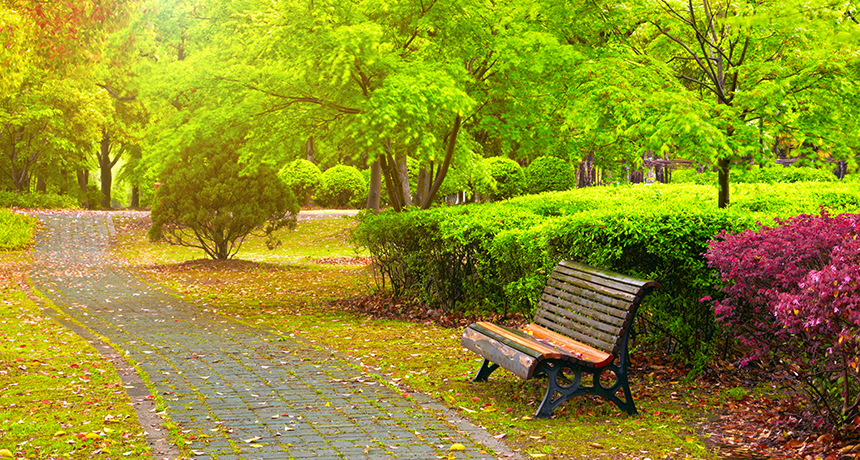Trees can make summer ozone levels much worse
The greenery releases chemicals, especially on hot days, which work with fossil-fuel pollution to make ozone

Most cities value the shade and calm that trees offer. But those same leafy bowers can spew chemicals that worsen summer ozone pollution.
silverjohn/iStockphoto
Share this:
- Share via email (Opens in new window) Email
- Click to share on Facebook (Opens in new window) Facebook
- Click to share on X (Opens in new window) X
- Click to share on Pinterest (Opens in new window) Pinterest
- Click to share on Reddit (Opens in new window) Reddit
- Share to Google Classroom (Opens in new window) Google Classroom
- Click to print (Opens in new window) Print
People often recommend planting trees to make cities greener, cleaner and healthier. But during heat waves, city trees can actually boost air pollution. Indeed, a new study finds, up to 60 percent of the smoggy ozone in a city’s air on hot days may trace to chemicals emitted by trees.
The findings might seem the opposite of what you would expect, notes Robert Young. He’s an expert in city planning at the University of Texas at Austin who was not involved in the new study. Indeed, he notes, “everything has multiple effects.” The new findings do not mean cities should discourage tree planting, he says. Instead, cities may need stricter controls on other sources of pollution, such as tailpipe emissions from cars and trucks.
City trees offer a host of benefits. These include helping soak up stormwater that might otherwise drain into rivers (carrying pollution with it). Trees also provide cooling shade. They even soak up carbon dioxide, a greenhouse gas. At the same time, these trees release oxygen into the air.
But oxygen is far from the only gas that trees and certain other green plants release into the air. One of these chemicals is a hydrocarbon known as isoprene (EYE-so-preen). It can react with combustion pollutants, such as nitrogen oxides. The result is the formation of ozone. A component of smog, ozone can irritate the lungs and aggravate airway diseases, such as asthma.
Cars and trucks are major sources of nitrogen oxides. And these oxides don’t interact only with isoprene. They also react with certain scented compounds that trees can spew. Among these are monoterpenes (MON-oh-tur-peens) and sesquiterpenes (SES-kwih-tur-peens). These terpene reactions can help create lots of other very tiny airborne pollutants.
Galina Churkina works in Germany at Humboldt University of Berlin. She and her team wanted to probe how much the chemicals released by trees could affect city air.
To do this, the researchers turned to a computer. They asked it to model the likely reactions between plant chemicals and nitrogen oxides in air throughout the Berlin metropolitan area. To do that, the researchers fed in local weather data for two summers. One was 2006, when there was a heat wave. The other was 2014, when temperatures were milder.
An average daily high there in summer tends to max out at roughly 25° Celsius (77° Fahrenheit). On such a day, chemicals emitted by area greenery would likely have contributed to making about 6 to 20 percent of the ozone in the city’s air. But at peak spikes during a heat wave, when temperatures soar to more than 30 °C (86 °F), tree-chemical emissions also spike. As a result, they are now likely to be responsible for up to 60 percent of the ozone in air.
Churkina says her team was not surprised to see the seemingly contrary relationship between plants and pollution. She adds that “its magnitude was, however, quite amazing.”
Her team shared its new findings June 6 in Environmental Science & Technology.
The results, Churkina says, suggest that city tree-planting programs should not ignore the role this greenery may play in aggravating summer air pollution. Adding more trees will improve quality of life only if those cities also undertake plans to sharply cut vehicle pollution in summer and to boost their reliance on clean energy sources for electric power, she says.







